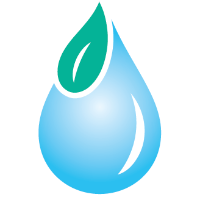Daugherty Water for Food Global Institute
Date of this Version
2021
Document Type
Article
Citation
Published in Water Research 190 (2021) 116668
https://doi.org/10.1016/j.watres.2020.116668
Abstract
The transboundary River Ganga serves as a conduit for meltwater from the Himalayas and is a major freshwater source for two thirds of Indian population before emptying into the Sundarban Delta, the largest estuary in the Bay of Bengal. Endocrine disrupting compounds (EDCs) such as phthalic acid esters (PAEs) and bisphenol A (BPA) used as organic plastic additives can pollute the aquatic environment receiving plastic litter. Hence, we have investigated these EDCs in water samples from Ganga and Sundarban wetland of India. Since these compounds exhibit estrogenic potential, we have further measured steroids and evaluated the estrogenic activity (estradiol equivalents, Bio E2Eqs) using an in-vitro bioassay (E-Screen). Further Bio E2Eqs were compared with the sum of predicted estradiol equivalents based on the chemical concentrations of PAEs and BPA by E-Screen (Chem E2Eq) and YES factors (Chem YES). Caffeine was measured as a marker for anthropogenic wastewater discharge. Results showed that the highest Bio E2Eq (below the lowest observable effect of E2 on fish) was associated with sites having sewer outfalls in the middle stretch of the river, and concomitantly coinciding with the elevated concentrations of caffeine. Neither Chem E2Eq nor Chem YES correlated with measured Bio E2Eqs. River concentrations of BPA (0.04–4.46 μg/L) and Σ7 plasticizers (0.43–7.63 μg/L) were higher than BPA (0.21–2.82 μg/L) and Σ7 plasticizers (0.85–2 μg/L) in the Sundarban wetland. The only steroids detected were androgens, found at four sites in Ganga (0.007 μg/L ± 0.003, mean ± S.D.). The highest estimated ecotoxicological risk to aquatic insect and fish stemmed from BPA. A secondary effect, and a potential impact on human health could be reflected via fish consumption from the productive fisheries region along the lower stretch of River Ganga. Identification of areas of elevated estrogenicity, plasticizer and steroid concentrations in River Ganga can be used to design and implement interventions for the remediation of such emerging contaminants.
Supplemental materials
Included in
Environmental Health and Protection Commons, Environmental Monitoring Commons, Hydraulic Engineering Commons, Hydrology Commons, Natural Resource Economics Commons, Natural Resources and Conservation Commons, Natural Resources Management and Policy Commons, Sustainability Commons, Water Resource Management Commons


Comments
Copyright © 2020 Elsevier Ltd. Used by permission.